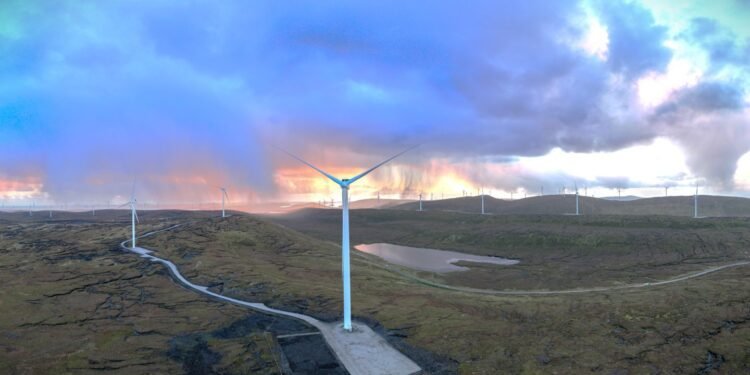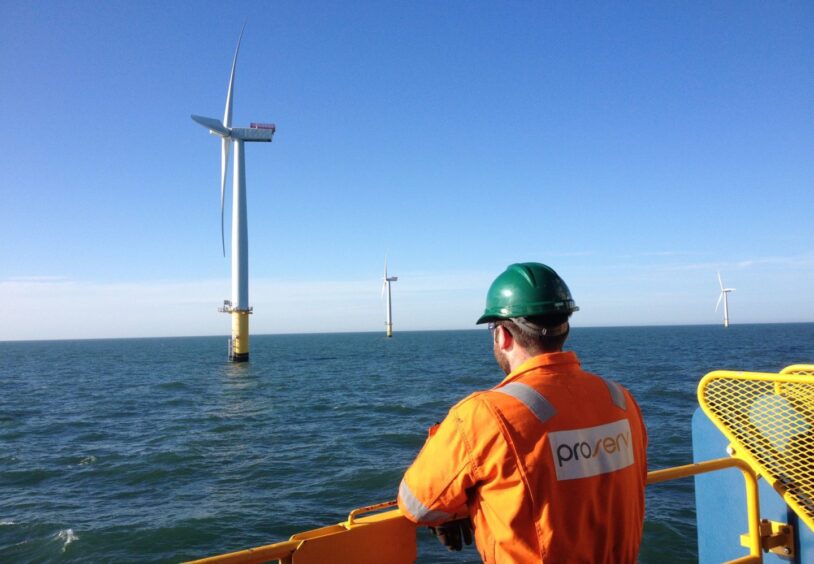SSE (LON: SSE) has upped its energy production across its portfolio of wind, gas and coal power through the most recent quarter.
The Perth-headquartered firm “good operational performance against variable weather conditions” in an update on its third quarter. It added operating profit expectations across its business units “remain unchanged” albeit it cautioned full year performance remains subject to a number of factors, including more weather.
Generation output from its SSE Renewables division increased 26% in first nine months to the end of December compared to same period in prior year, SSE said. It added its “renewables fleet continue to experience periods of variable weather conditions” in January when Storm Eowyn hit, which the Met Office has described as “the UK’s most powerful windstorm for over a decade“.
With its growing portfolio of investments in onshore and offshore wind in the UK, it said it’s massive Dogger Bank wind farm was still expected to complete in the second half of 2025. SSE has a 40% stake in the project alongside Equinor (OSL: EQNR) 40% and Eni (IT: ENI) 20%. It added a second vessel has been reserved for the project from 2026 to support turbine installation across the second and third phases of the project.
It also reported it has achieved first power at its 101MW Yellow River onshore wind farm that it has made a financial investment decision (FID) in its 208MW Strathy South onshore wind farm.
It said it’s SSEN Transmission business, in which it holds a 75% stake along with Ontario Teachers’ Pension Plan Board which owns 25%, published its “bold blueprint to deliver at least £22 billion of critical grid infrastructure in the five years to 2031”.
It added its what is RIIO-T3 business plan – set out to meet requirements of the regulator Ofgem – included an “additional £9.4bn of potential future expenditure, which could bring total investment over the price control period to around £32bn”.
It added it expects to finalise further investments in networks for offshore wind projects – through accelerated strategic transmission investment (ASTI) project plans – “within the coming months”.
It also noted the announcement its SSE Thermal business made that it will invest in a new 300 MW biofuel plant in Ireland, the Tarbert Next Generation power station in Co Kerry. It noted it has secured “significantly increased clearing price” of €149,960/MW in Ireland’s recent capacity auction.
Last year SSE said its longstanding chief executive Alistair Phillips-Davies will retire from the firm after 11 years in the role. The firm is likely to unveil his successor when it confirms its full year results in April.
SSE chief financial officer Barry O’Regan commented in the third quarter results.
He said: “We are pleased to report good operational performance during the quarter and, more recently, we were able to provide a swift and effective response to Storm Eowyn, with our teams expertly managing widespread network disruption. Looking further ahead, our resilient and balanced business mix continues to give us confidence in achieving targeted adjusted earnings per share of between 175 – 200p in 2026/27.
“Thanks to our focus on renewables, networks and system flexibility, we are a key delivery partner in the UK’s Clean Power Action Plan. As we look to the opportunities presented by decarbonisation our focus remains on capital discipline, strategic delivery and the efficient operation of our value-creating assets.”
John Moore, senior investment manager at RBC Brewin Dolphin, said: “SSE has delivered another solid quarter in operational terms, but the share price has fallen nearly one-fifth from its peak in September 2024.
“That is a reflection of a general reduction in energy generation pricing and, in turn, assumptions on the returns that can be made on wind assets.
“Nevertheless, the company remains in a strong position in a changing short-term market environment.
“While near-term headwinds may persist for the next six to nine months, SSE has a long runway of growth given its alignment with energy policy and the broader need for investment in renewables, energy transmission, and storage.”
Recommended for you




 © Supplied by Proserv
© Supplied by Proserv






